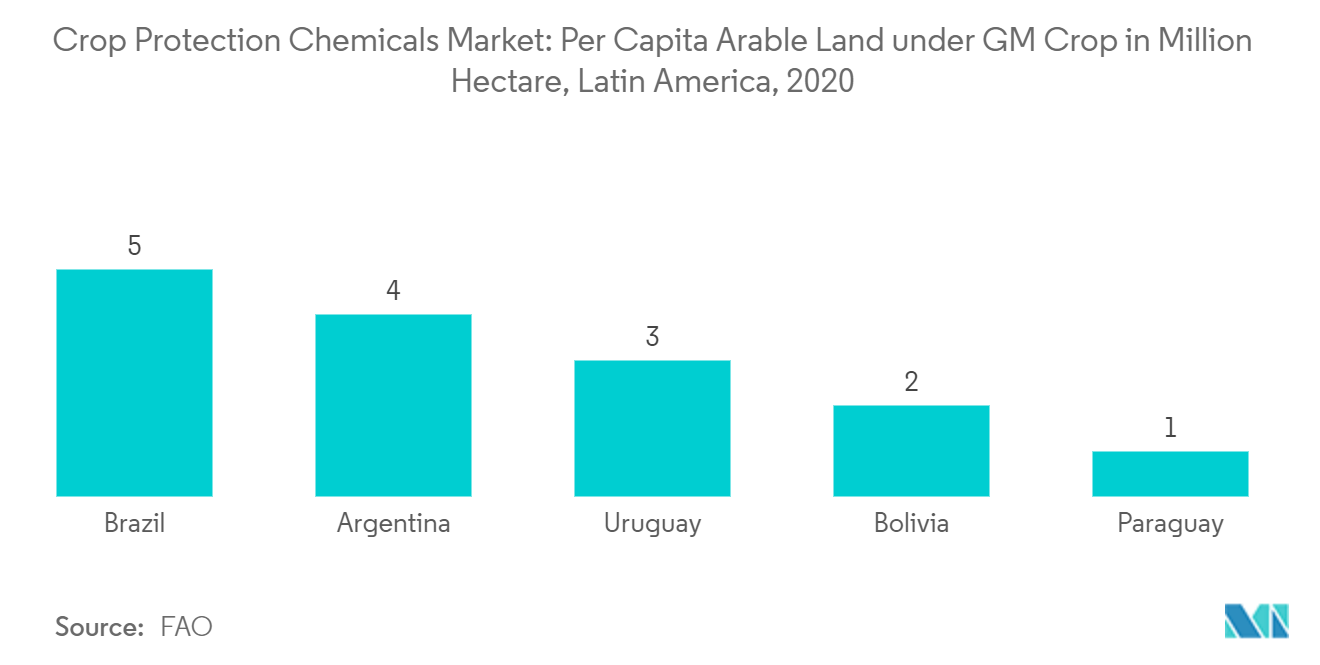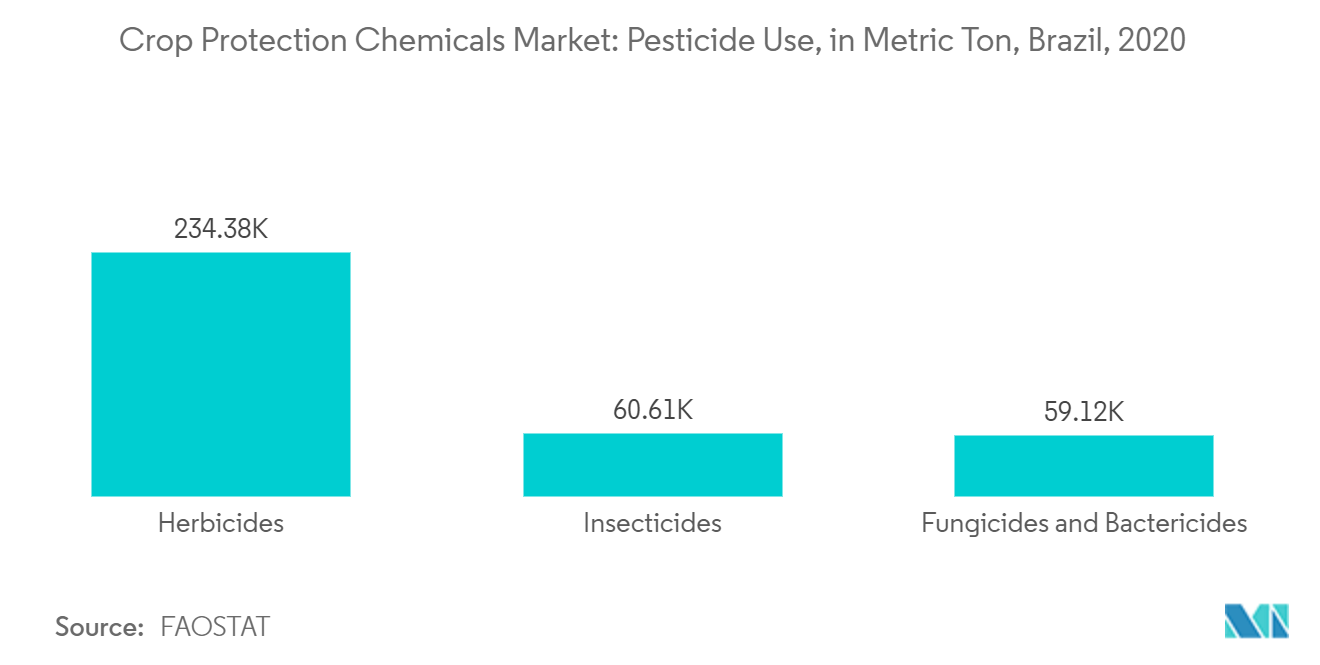Market Trends of Latin America Crop Protection Chemicals Industry
This section covers the major market trends shaping the Latin America Crop Protection Chemicals Market according to our research experts:
Adoption of Genetically Modified (GM) Crops
The use of genetically modified (GM) organisms is the new trend in the market. Due to decreasing arable land in the Latin American region, GM crops are highly preferred to maintain productivity levels. GM crops require a significant amount of crop protection chemicals, which play a vital role in proper growth and good-quality harvests.
Brazil and Argentina are both among the top five GM-cultivating countries. Latin America, along with Bolivia, Chile, Colombia, Costa Rica, Honduras, Paraguay, and Uruguay, cultivated 42.7% of the global GM crop area. On the other hand, Brazil and Argentina have chosen an opposite strategy, enabling, purposefully, and fiercely embracing biotech innovation and transforming South America into a global leader in GM crop production. With the adoption of GM crops in these countries, cultivation is anticipated to increase, which is anticipated to have a positive impact on the crop protection chemicals market in the region.
The benefits of transgenic crops include saving water and reducing emissions of carbon dioxide, which help preserve many trees. These crops contain disease-resistant, herbicide-resistance, and drought-resistant genes. Brazil has the largest area under the cultivation of GM crops.

Brazil Dominates the South American Market
Brazil has the largest and one of the fastest-growing markets for crop protection chemicals in South American countries. Brazil has developed from a net food importer to a major exporter, mostly by improving productivity through technology adoption and the use of crop protection chemicalso a major exporter, mostly by improving productivity through technology adoption and the use of crop protection chemicals. Although production has been witnessing a smaller decline, it is expected to rebound with more use of crop protection chemicals.
Glyphosate is the best-selling crop protection product in Brazil. It is used mainly on crops like soy, corn, wheat, cotton, and coffee. The herbicide tops the list of the most commercialized agrochemicals in the country, according to a survey by the G1 agency released by the Brazilian Association of Post-Patent Defensives (AENDA). The herbicide 2,4-D is also the second-best-selling crop protection product in Brazil. Its mode of action is different from glyphosate, controlling only one group of weeds. It is one of the bestsellers as it helps manage the resistance that many weeds have developed against glyphosate.
The fungicide, mancozeb, is the third most sold in Brazil and also the oldest. It is again being widely used for controlling a major soy disease, Asian rust, normally mixed with more modern products to ensure the effectiveness of newer products that were losing their effectiveness against the disease. Chinese and Indian companies have been entering Brazil through distribution systems and/or as registration holders, moves that are considered much more lucrative than just supplying products to local distributors.


